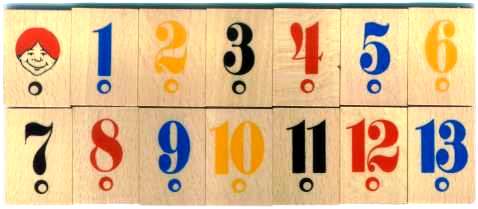Tile Rummy Games
In Romania and Turkey, and maybe in other countries of south-east Europe and west Asia, there is a tradition of playing games of the Rummy family with a set of 106 numbered and coloured tiles. Similar tiles are also found in Argentina, and equivalent rummy tile sets obtainable in all parts of the world for playing the proprietary game Rummikub®.

In principle the same games could be played with a double pack of standard cards including two jokers. It is not clear why tiles came to be used instead. Maybe it is just that they were found more robust and convenient for certain games, or perhaps, as in some other parts of the world, tiles were used to evade some regulation prohibiting playing with cards.
On this site, there are descriptions of
- Okey, a popular Turkish tile rummy game.
- Okey 101, a variant of Okey played with 21-tile hands.
- Romanian Tile Rummy
- Burako, a Canasta-like game played in Argentina.
- Rummikub®, a commercial version of tile rummy introduced to the West from Israel by Ephraim Hertzano.
In the Far East it is common to play rummy games with other types of tiles. The best known of these is Mah Jong, which has spread world wide. Mah Jong is played with a tile version of a Chinese money card pack, and there are related games played with tiles based on Chinese dominoes.